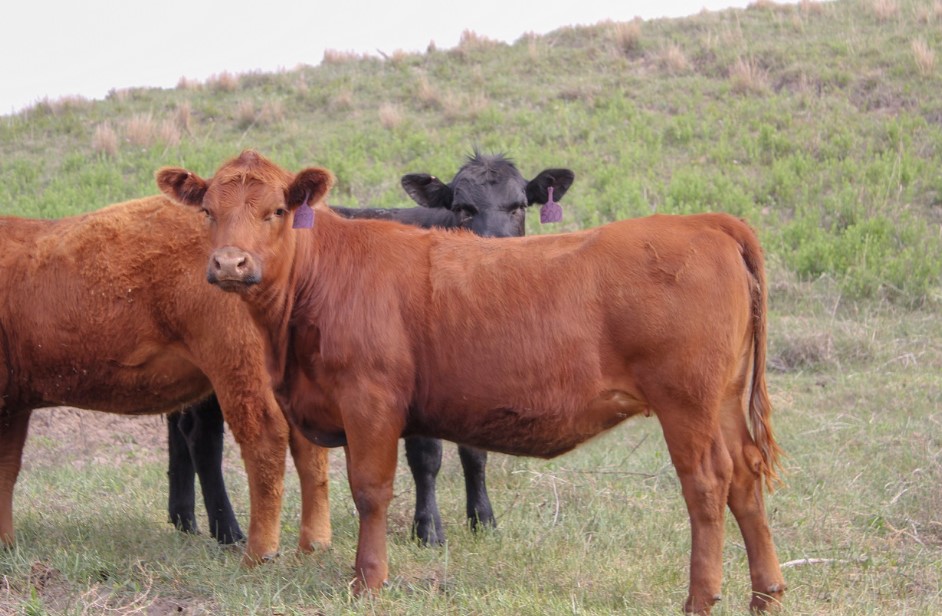
On today’s Cow-Calf Corner, Kellie Curry Raper, Oklahoma State University Extension Livestock Marketing Specialist in the Department of Agricultural Economics writes about reputation when buying and selling cattle.
“Reputation cattle” is a term you’ll hear often when cattle prices are discussed. In a survey of Oklahoma cattle buyers, 64% said that seller reputation played a part in their last feeder calf purchasing decision (Boline 2016). What is “reputation” in the cattle market? How do you build it? And what is it worth?
What is it?
Reputation has several puzzle pieces that come together to create the whole picture. The biggest puzzle piece is how cattle perform for the buyer. If a buyer has a positive experience with a seller’s cattle, that buyer is more likely to raise a hand to bid the next time that seller’s cattle come through the ring and may be willing to pay a premium for those cattle. That seller is building a positive reputation with the buyer – and other buyers – for cattle performance. If the calves were a train wreck, trust that buyers have a very long memory. Cattle performance encompasses a lot of things, including gains, health, and handling ease to name a few – and different cattle buyers will value certain attributes more than others.
How do you build it?
“You can’t build a reputation on what you are going to do.” Henry Ford
What you do today influences the reputation of your cattle tomorrow. A positive reputation for quality cattle is built over time by marketing cattle that perform well for buyers’ needs. That performance is linked to cattle genetics, herd management protocols, and calf management practices, among others. Work toward improving the overall quality of your cattle and toward implementing important health management protocols that strengthen immune systems of calves moving through the system.
Cattle buyers are very good at their craft and are particularly good at judging the visible attributes of cattle and what that indicates about potential. However, cattle also have attributes that are not easily observed. These attributes are known as credence attributes. The buyer is left to decide whether attributes that may be announced but are not physically observable are present. When sellers have established their reputation, buyers see management claims as more credible.
Some of you believe that you have to be a large operation to establish a positive reputation, even if you are “doing all the right things.” If you are a smaller operation and feel the struggle of establishing a reputation, there is evidence that third-party certification of the preconditioning bundle of calf management practices at least partially substitutes for an established reputation when it comes to market value.
What is it worth?
While the market value of seller reputation in cattle markets is considered to be a key component of the price paid by the buyer, it is elusive to measure in standard auction data. Boline (2016) interviewed cattle buyers on-site at livestock auctions and found that reputation does matter, but also that third-party verification can act as a proxy for reputation (Figure 1). Cattle buyers were willing to pay similar premiums, on average, for certified cattle with an unknown reputation ($2.52/cwt) and uncertified cattle with a positive reputation ($2.86/cwt). Certified cattle from a reputation seller averaged $10.42/cwt in stated premiums. It is also important to note that negative reputations were discounted more heavily than positive reputations were rewarded and that even certified cattle from a seller with a negative reputation were still discounted quite heavily. For cattle with an unknown reputation, only 2% would not consider those cattle if certified, but if cattle were uncertified, 9% of buyers would not consider purchasing them. However, 25% of buyers would not consider purchasing cattle with a negative reputation, regardless of certification.

Figure 1. Cattle Buyer Willingness to Pay Based on Seller Reputation
“It takes many good deeds to build a good reputation, and only one bad one to lose it.” Benjamin Franklin
Cattle buyers talk, so reputation will also be built around the coffee pot at the livestock market café or the feedyard. Whenever possible, get feedback from buyers about cattle they have purchased from you. If things went well, figure out what you did right. If things went south, figure out what needs corrected. Remember that reputations can be positive or negative, so take care that you are making management decisions that continue to build up the positive reputation of your cattle.
Boline, Amy Ranae. 2016. Essays on Beef Calf Management Practices and the Market Value of Seller Reputation. M.S. Thesis, Oklahoma State University.
















